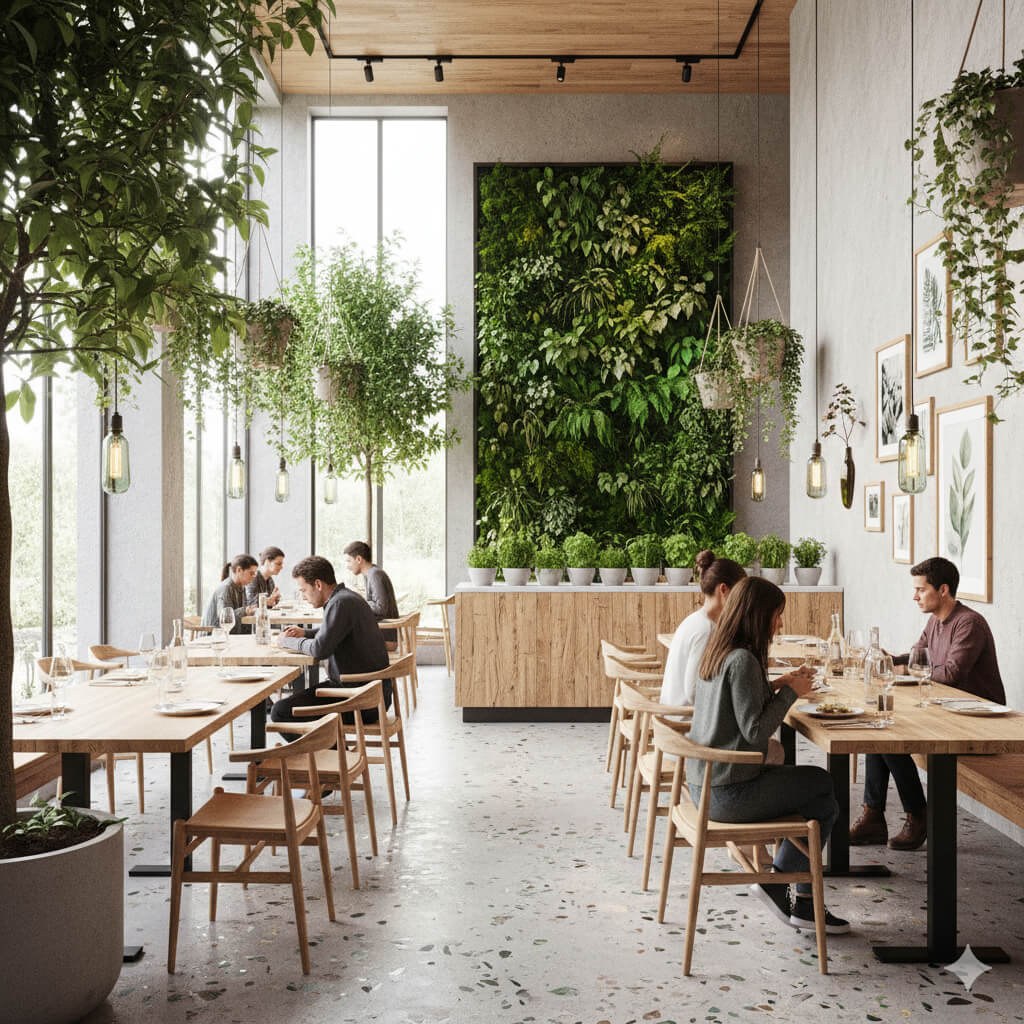October 10, 2025

Sustainability isn’t just a buzzword — it’s the future of restaurant design. From eco-friendly materials to energy-saving technologies, modern diners increasingly favor establishments that prioritize the planet. If you’re planning a new restaurant or redesigning your space, sustainable design choices can reduce costs, boost your brand image, and attract eco-conscious customers.
Let’s explore some essential sustainable restaurant design tips.
Opt for reclaimed wood, bamboo, recycled metal, and other sustainable materials when designing your interiors. Not only are these materials durable and stylish, but they also communicate your commitment to environmental responsibility.
Incorporate low-VOC paints, recycled furniture, and eco-friendly textiles to reduce harmful emissions and create a healthier environment for both staff and customers.
Even small touches — like biodegradable straws or reusable cloth napkins — can make a lasting impression.
Related: The Science of Food Photography for Restaurant Websites
Related Resource:
Lighting and temperature control can consume a significant portion of your restaurant’s energy. Use LED lighting, install motion sensors in restrooms, and choose ENERGY STAR–rated appliances for your kitchen. Smart thermostats can also help optimize energy use throughout the day.
Energy-efficient kitchen equipment can help reduce energy consumption and lower operating costs, which is a win-win for both your wallet and the planet.
Related: How to Calculate ROI on Restaurant Marketing Campaigns
Related Resource:
Large windows and open layouts not only make your restaurant feel more inviting — they also reduce the need for artificial lighting and ventilation. Using natural elements like plants and vertical gardens improves air quality while reinforcing a fresh, organic vibe.
Creating an indoor-outdoor flow or having a green wall in your restaurant can enhance both the aesthetic and environmental benefits of your space.
Paper menus, flyers, and printed loyalty cards all add up. Transition to digital menus, QR codes, and online reservations to cut down on paper waste while improving convenience for your customers.
Going digital doesn’t just save paper — it also creates a more seamless and modern experience for guests, with easier menu updates and streamlined order processes.
Related: How to Use Your Website to Collect Customer Emails and Build Loyalty
Related Resource:
Install low-flow faucets and energy-efficient dishwashers to reduce water consumption. If your restaurant features landscaping, choose drought-tolerant plants and consider a rainwater collection system for irrigation.
Small changes, like using water-efficient dishwashers and reusing water for landscaping, can have a significant impact on your overall environmental footprint.
Sustainability sells. Highlight your eco-friendly practices on your website and social media. From sourcing local produce to using compostable packaging, transparency builds trust and helps customers feel good about dining with you.
By showcasing your commitment to the environment, you not only educate your customers but also set your brand apart as a leader in sustainability.
Related: What Every Restaurant Owner Should Know About Google Business Profile
Related Resource:
A sustainable restaurant design isn’t just good for the planet — it’s good for business. By reducing waste, conserving energy, and embracing eco-conscious choices, you can create a space that resonates with modern diners and supports long-term success.
Every sustainable decision, big or small, moves your restaurant toward a greener future.
By integrating sustainable materials, energy-efficient technologies, and eco-friendly practices, your restaurant can build a solid reputation as an environmentally responsible business. And it’s not just about the planet — it’s a move that can attract eco-conscious customers, improve your bottom line, and help you stand out in an increasingly green-conscious market.
Stay up to date with the latest tips, expert insights, product reviews, and step-by-step guides to help you grow, create, and succeed—no matter your industry or passion.